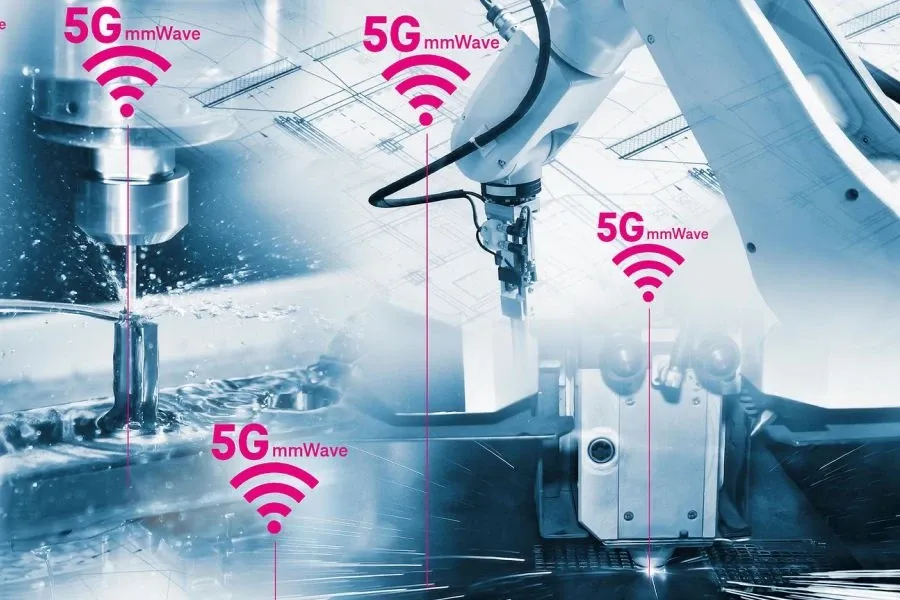GSMA and African Operators Team on AI and Device Strategy
The GSMA unveiled two new initiatives that should drive AI development and mobile access across Africa.

5G millimeter wave (mmWave) connections can offer extreme capacity, ultra-high throughput, and low latency. This performance potential makes 5G mmWave an optimal solution for use cases with massive throughput requirements.
For certain applications with critical high throughput requirements, it is essential to guarantee a stable throughput even under heavy network load. Resource prioritization is required. Addressing this need, Deutsche Telekom, Ericsson, and Qualcomm have implemented a priority scheduling mechanism in a 5G Standalone (SA) NR-DC (dual connectivity) network using both mmWave and mid-band frequencies to ensure QoS, particularly for uplink where capacity is typically much lower than for downlink.
This QoS-managed connectivity demonstration, conducted in a field trial set up at the Telekom Campus in Bonn, confirmed that the priority scheduling mechanism can be implemented to ensure radio resources allocation per network slice or per device. The demonstrated performance of mmWave opens the door for the technology to enable diverse applications with massive uplink requirements. It is especially expected to play a role in enabling the upload of data collected for analytics in industrial campuses, the transmission of multiple video streams and immersive in-stadium customer experiences at entertainment venues, or software and data up- and download to vehicles at automotive tests tracks, e-charging stations or other mobility environments. In each scenario, this mmWave 5G SA dual connectivity with QoS-managed connectivity can be implemented to ensure every device or user is guaranteed the required resources to fulfill their mission.
“As more enterprises adopt 5G connectivity to accelerate their digitalization, we expect to see the emergence of more mission-critical and industrial applications with high uplink demand. Our tests show that mmWave technologies can deliver optimum performance to enable such use cases. Deutsche Telekom will continue to drive innovation in mmWave with partners to accelerate the availability of devices and solutions for our customers’ real-world cases,“ said Kaniz Mahdi, SVP of Technology Architecture & Innovation at Deutsche Telekom.
The indoor and outdoor test bed was implemented as a trial network consisting of a fully-fledged 5G Ericsson Core, four Ericsson 3.7 GHz mid-band radios, and four 5G SA 26 GHz mmWave radios. The 5G SA network was connected to a 5G mobile testing platform (MTP) powered by Snapdragon 8 Gen 1 Mobile Platform with an integrated Snapdragon X65 5G Modem-RF System. During the trial, the partners investigated mmWave capabilities and constraints relating to various radio propagation conditions. The partners achieved impressive results in different scenarios: 5 Gbps peak rate for downlink, and 700 Mbps in uplink where the QoS can be managed for both downlink and uplink.
In Germany, the 26 GHz frequency spectrum is allocated to interested parties by the Federal Network Agency. Its use is currently restricted to local applications. This spectrum is therefore suitable for use in 5G campus networks for applications that require particularly high data rates. Moving forward, three partners announced they will continue to work with ecosystem partners to drive the evolution of mmWave NR-DC technology.